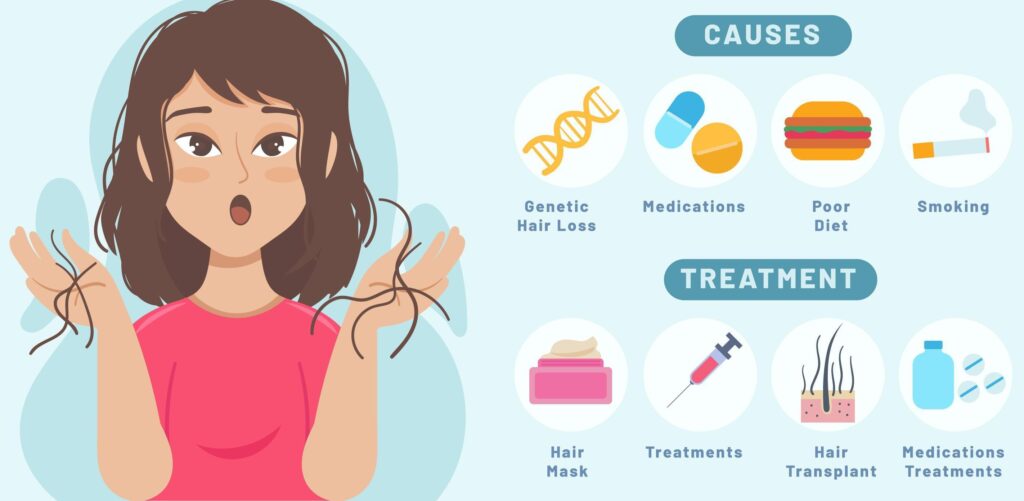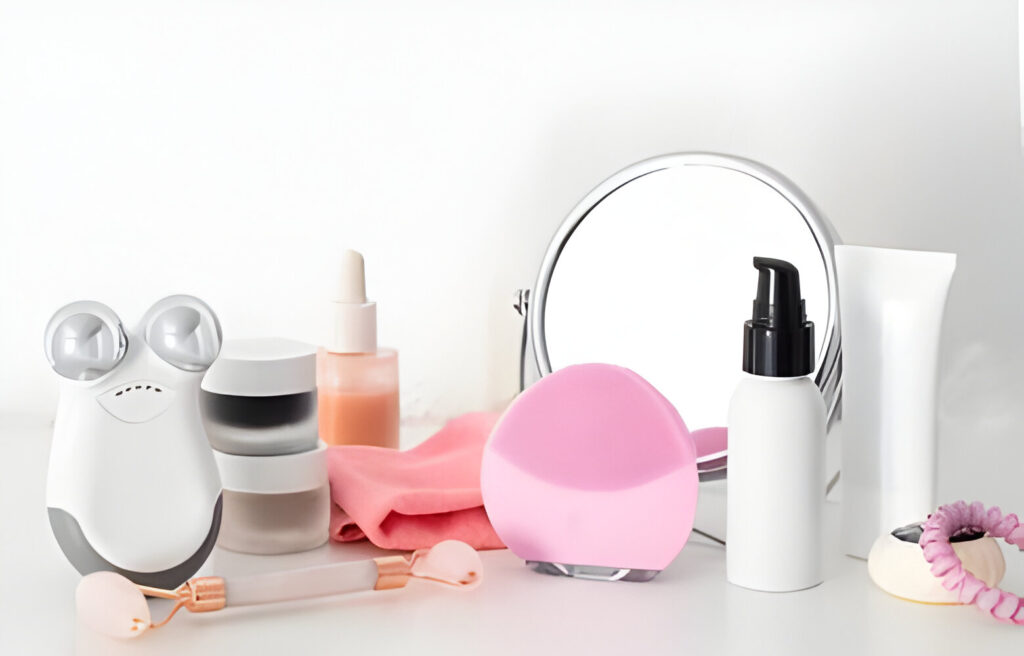Hair loss is a common concern for many people, affecting both men and women. With numerous hair loss treatments available, choosing the right one for your specific type of hair loss can be overwhelming. This blog will guide you through the process, helping you make an informed decision.
Understanding Hair Loss
Hair loss can be caused by various factors, including genetics, hormonal changes, medical conditions, and lifestyle choices. It’s essential to identify the type of hair loss you have before selecting a treatment. The most common types include:
- Androgenetic Alopecia: Also known as male pattern baldness or female pattern baldness, this type is genetic and often results in a receding hairline or thinning at the crown.
- Alopecia Areata: An autoimmune disorder that causes patchy hair loss.
- Telogen Effluvium: Temporary hair loss due to stress, illness, or hormonal changes.
- Traction Alopecia: Hair loss caused by tight hairstyles that pull on the hair.
Hair Loss Treatments
1. Medications
Medications are often the first line of defense against hair loss. They include:
- Minoxidil: An over-the-counter topical treatment that stimulates hair growth and slows hair loss.
- Finasteride: A prescription oral medication for men that reduces hair loss by blocking the hormone responsible for hair follicle shrinkage.
2. Natural Hair Loss Remedies
Many people prefer natural hair loss remedies due to their minimal side effects. Some popular options include:
- Essential Oils: Oils like rosemary, peppermint, and lavender have been shown to promote hair growth.
- Scalp Massage: Regular scalp massages can improve blood circulation and stimulate hair follicles.
- Dietary Changes: Eating a balanced diet rich in vitamins and minerals, such as iron, zinc, and biotin, can support hair health.
3. Hair Transplant Surgery
For those with significant hair loss, hair transplant surgery is a viable option. This procedure involves moving hair follicles from one part of the scalp to the thinning or balding areas. It offers a permanent solution but can be costly and requires a recovery period.
4. Best Hair Growth Products
Several over-the-counter products claim to support hair growth. These include:
- Hair Growth Shampoos and Conditioners: Formulated with ingredients like biotin and keratin, these products can strengthen hair and promote growth.
- Topical Treatments: Products containing minoxidil or other growth-stimulating ingredients.
5. Female Hair Loss Solutions
Female hair loss can be particularly distressing, but several treatments are tailored specifically for women:
- Hormone Therapy: For women experiencing hair loss due to hormonal imbalances, hormone therapy may be effective.
- PRP Therapy: Platelet-rich plasma (PRP) therapy involves injecting the patient’s own plasma into the scalp to stimulate hair growth.
6. Male Pattern Baldness Treatment
Men with androgenetic alopecia have several treatment options:
- Medications: Minoxidil and finasteride are commonly used.
- Hair Transplant Surgery: A permanent solution for severe cases.
- Laser Therapy: Low-level laser therapy (LLLT) can stimulate hair growth and is often used in conjunction with other treatments.
7. Scalp Health for Hair Growth
Maintaining a healthy scalp is crucial for hair growth. Tips for scalp health include:
- Regular Cleansing: Use gentle shampoos to keep the scalp clean and free of excess oil and dandruff.
- Exfoliation: Scalp scrubs can remove dead skin cells and improve circulation.
8. Preventing Hair Loss Naturally
Preventing hair loss naturally involves lifestyle changes and holistic approaches:
- Stress Management: Reducing stress through activities like yoga, meditation, and exercise can minimize hair loss.
- Healthy Diet: Consuming a diet rich in antioxidants, vitamins, and minerals supports overall hair health.
9. Hair Regrowth Solutions
For those looking to regrow hair, several solutions are available:
- Minoxidil: A proven topical treatment.
- Hair Growth Supplements: Vitamins and supplements specifically formulated for hair health.
- PRP Therapy: Effective for both prevention and regrowth.
10. Laser Therapy for Hair Loss
Low-level laser therapy (LLLT) is a non-invasive treatment that uses red light to stimulate hair growth. It’s suitable for both men and women and can be used alongside other treatments.
11. Hair Loss Supplements
Supplements can support hair growth by providing essential nutrients. Look for products containing biotin, collagen, and vitamins A, C, and E.
12. Non-Surgical Hair Restoration
Non-surgical options include:
- Hair Systems and Wigs: Custom-made hairpieces that provide immediate results.
- Scalp Micropigmentation: A cosmetic procedure that creates the appearance of a fuller scalp.
13. Hair Loss Treatment Reviews
Before choosing a treatment, it’s helpful to read reviews and testimonials from others who have tried it. Look for feedback on effectiveness, side effects, and overall satisfaction.
14. Effective Hair Loss Shampoos
Shampoos formulated for hair loss can help maintain a healthy scalp and support hair growth. Look for products with ingredients like ketoconazole, saw palmetto, and biotin.
15. Consult a Professional
Consulting a dermatologist or trichologist can provide personalized advice and treatment options based on your specific type of hair loss.
Conclusion
Choosing the best hair loss treatment requires understanding your type of hair loss and exploring the available options. From medications and natural remedies to surgical and non-surgical solutions, there is a treatment that can help you regain your confidence and improve your hair health. Remember to consult a professional to ensure you select the most effective and safe treatment for your needs.
FAQs
Q1: What is the most effective treatment for male pattern baldness?
A1: The most effective treatments for male pattern baldness include medications like minoxidil and finasteride, hair transplant surgery, and low-level laser therapy (LLLT).
Q2: Are natural hair loss remedies effective?
A2: Natural remedies, such as essential oils, scalp massages, and a balanced diet, can be effective for some people. However, their results may vary and they often work best when combined with other treatments.
Q3: Can women use the same hair loss treatments as men?
A3: Women can use many of the same treatments, such as minoxidil and PRP therapy. However, some treatments, like finasteride, are not typically recommended for women. It’s best to consult a healthcare professional for personalized advice.
Q4: How long does it take to see results from hair loss treatments?
A4: Results vary depending on the treatment. Topical treatments like minoxidil can take 3-6 months to show visible results. Hair transplant surgery results typically become noticeable after 6-12 months.
Q5: Are there any side effects of hair loss treatments?
A5: Some treatments may have side effects. Minoxidil can cause scalp irritation, while finasteride may have sexual side effects for men. It’s important to discuss potential side effects with a healthcare professional before starting any treatment.




